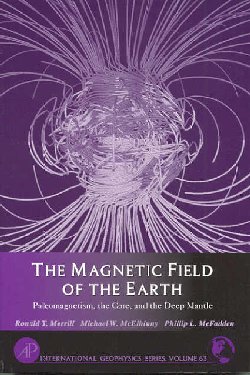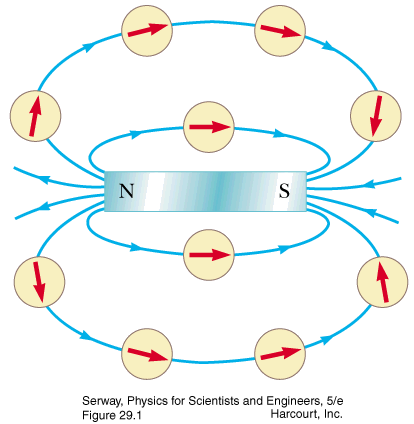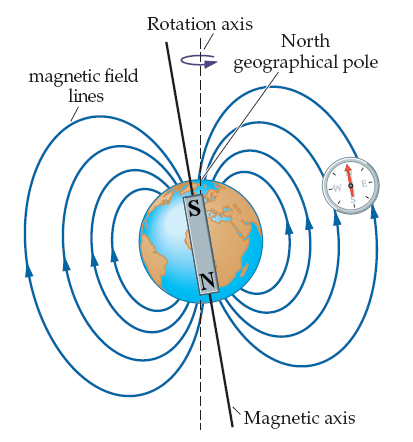Summary
- Electric power
- Series & parallel circuits
- Kirchhoff's rules and looped circuits
- Capacitor circuits

Chapter 22
- Magnets
- two poles, like poles repel
- Earth is a giant magnet
Example #1
- magnets are composed of magnets
- Magnetic fields
- lines of force

- overhead demo
applet
- magnetic field video
- Lecture learning outcomes
A student who masters the topics in this lecture will be able to:
- describe the basic features of a magnet and its interaction with other magnets in the vicinity
- draw magnetic lines of force to represent the magnetic field around a bar magnet, including arrows to indicate the direction of the magnetic field
Practice:
Try these additional examples
Example #2
Example #3
Prepare:
Read textbook section 22-6 before the next lecture (we will skip around a little in chapter 22)
POP4 22.Q14
Which pole of the Earth's magnetic field is under northern Canada?
A. north (N)
B. south (S)
Answer
Walker5e EYU 22.1
Is pole 1 of the bar magnet a north magnetic pole (N) or a south magnetic pole (S)?

A. north (N)
B. south (S)
C. It's impossible to say
Answer
Walker5e CnEx 22-1
Can magnetic field lines cross one another?
A. yes
B. no
Answer
B. south (S)


A. north (N)
The north pole of the compass needle is the arrow end, and it is attracted to the south pole of the bar magnet, which is marked pole 2. That means pole 1 is the north pole of the bar magnet.
B. no
A compass needle can point in only one direction at any given location. Like the electric field, the magnetic field is a vector sum of all the field contributions from nearby magnets, and the vector sum (like any other vector) can only point one direction. Two field lines that cross would suggest the magnetic field points in two directions at the same point in space.



